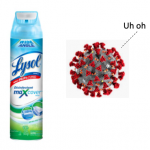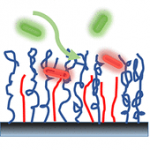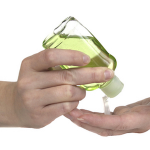If your sole goal in life is getting your hands on a can of Lysol spray, be prepared to be bitterly disappointed. The EPA gave its approval for Reckitt Benckiser (which sells the stuff) to make anti-COVID claims for two Lysol products. What's in there that can kill the virus? Time for "The Dreaded Chemistry Lesson From Hell"? I think so.
antimicrobials
Antibacterial surfaces are one way that we are fighting back against antibiotic-resistant bacteria. In one type of surface – naturally found on dragonfly wings – tiny pillars physically rip bacteria apart.
UV light is dangerous to humans. That's part of the reason why there's widespread interest in discovering light sources that can kill unwanted organisms – while leaving humans unscathed.
It's widely believed that a "bed of nails" surface destroys bacteria through puncturing the cell wall. But new research, based on extensive use of various microscopy techniques, a team of Australian and Nigerian have shown that an entirely different killing mechanism may be at play.
New research shows that the instructions on those little bottles – indicating that dime-sized drop is sufficient – are wrong. To properly coat your hands, you need to apply about 3 mL of sanitizer, or more than half a teaspoon. Here's why.
It s summer time and the living s easy. Time to fire up the BBQ, pull the summer clothes down from the attic (hopefully they still fit) and relax around the pool and if we are talking pools, than we also have to talk about chlorine.
Chlorine and pools go hand in hand. Any pool owner will tell you that keeping your chlorine levels (a




